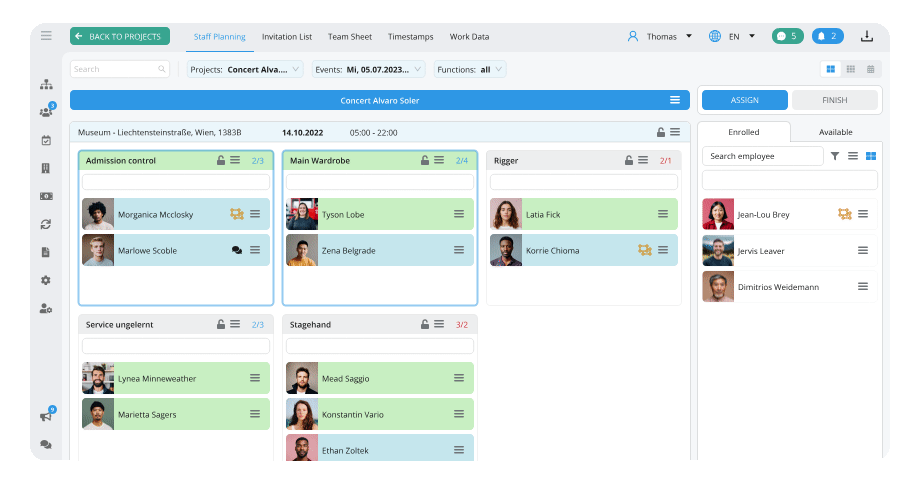Successfully implementing a new software solution is no walk in the park. The path to a smooth user experience with a new tool is riddled with stumbling blocks.
Adopting a new software tool is not a technical issue alone, but means changing processes which may affect many stakeholders.
To sidestep the pitfalls as elegantly as possible, several prerequisites should be taken into account.
1. Get Everyone on Board
Implementing a new software solution is all about change management. As processes which have been tried and tested for years are turned on their head and perhaps solved in a completely different way with the new tool, resistance is quick to crop up. To avoid this, it is important to listen to stakeholders from all affected departments.
These stakeholders must be given ample opportunity to have their say during the different software implementation phases, ideally beginning with the buying process. If they are not participating during this phase, it is recommended to get them involved immediately afterwards.
A software tool is only as good as the staff members who use it.
If your employees dread using a new tool and getting used to new processes, implementation will fail before it has even begun. Create a climate in which all affected staff members are engaged and involved. In the best case, they will be motivated to take the changes and put them into practice.
2. Determine a Project Leader
Independent of the size of your business, you should find a project leader who will be responsible for the software implementation from beginning to end. Whoever you choose should be given sufficient time and - depending on the size of your project - could work in a full-time or part-time capacity. The project leader is the link between the software provider and your business and/or the team who will be working with the tool.
The project leader collaborates with the software provider in configuring the areas of the software tool which are most important to the business, while continually looking for input from the team, i.e. its future users. As soon as the basic configuration is ready, the project leader gets the rest of their team involved and teaches team members the new processes.
Consider External Advice
Implementing a new software tool in an SME is no ordinary task. Should you lack the internal know-how and/or time, consider taking advantage of external resources.
3. Allow for Sufficient Time
A new enterprise software solution can usually not be implemented overnight. Make sure that you allow for sufficient time for each project phase. You will be going through the following phases:
- Configuration
- Training
- Testing
- Fine-Tuning
- Go Live
- Possible Further Training
Time and time again, software implementation in smaller companies fails as the euphoria of the early days gives way to a lack of time.
Operative tasks add up, and staff end up using tried-and-tested processes. Therefore, you should ensure that you plan the implementation process well beforehand. To do so, you may want to make use of less busy periods in your business.
4. Create a Project Schedule and Goals
Create a project schedule and define the go live date (when you start working productively with the software). This date will help all stakeholders to make the necessary preparations, which ensures that the transition is as smooth as possible.
You may want to create your own (approximate) milestones before this date to make sure that you do not lose sight of your deadline.
5. Determine and Fine-Tune Project Specs
Determine upfront which processes you would like to tackle with the new software tool. Liaise with the software provider to find out which of your goals is achievable and which might not be.
Ask your software provider how you can prepare before your first meeting with them.
Discuss what is needed with your teammates and agree on specific goals which you would like to achieve, for example implementing a digital time-tracking module which can be accessed by admins.
Conclusion
Implementing a new software solution should not be taken lightly. Name a project leader, create time- and content-related goals, and include your employees on this journey. This should ensure that your implementation process is a success.









